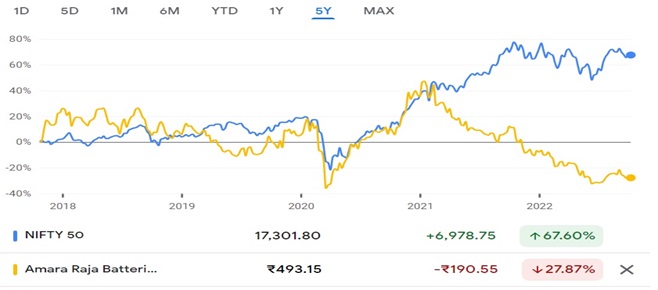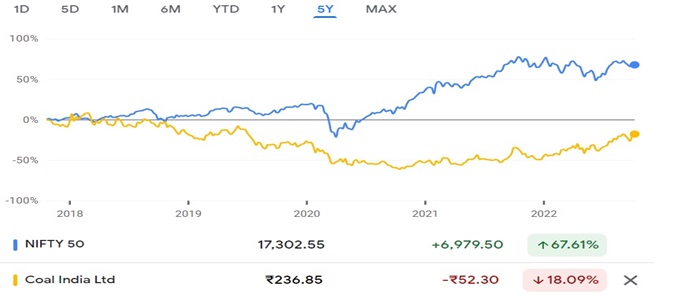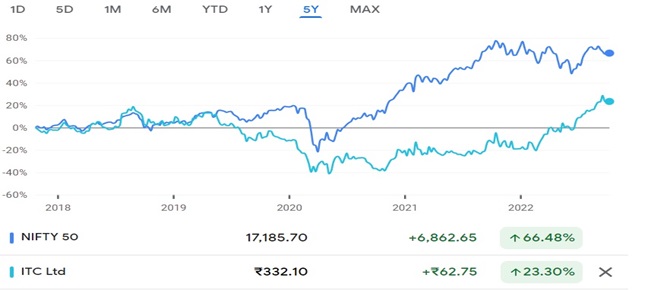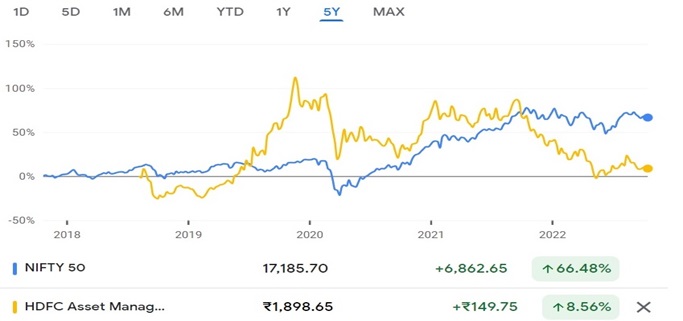Top Five Diwali Muhurat Stock Picks

Kotak Mahindra Bank Limited
|
Market Price |
Recommendation |
Target |
Time Horizon |
|
1863.35 |
Buy |
2305 |
1-Year |
Kotak Mahindra Bank - Q1 FY 2023 Review
Kotak Mahindra Bank Limited reported net revenue of ₹9,164.28 crores for the quarter ended June 30, 2022, compared to ₹8,042.82 crores for June 30, 2021. Profit After Tax was ₹2,755.39 crores for the quarter ended June 30, 2022, compared to ₹1,806.09 crores during the corresponding quarter of the previous year, respectively.
Kotak Mahindra Bank - Investment Summary
|
CMP (₹) |
1863.55 |
|
52 Week H/L |
1,631/2,253 |
|
Market Cap (crores) |
3,70,052 |
|
Face Value (₹) |
5.00 |
|
Promoter Holding (%) |
25.97 |
|
Non-Promoter Holding (%) |
74.03 |
|
Total (%) |
100.00 |
|
Book Value |
₹487 |
|
EPS TTM |
₹60.73 |
Kotak Mahindra Bank - Overview
-
The Kotak group's flagship company, Kotak Mahindra Bank Limited, has varied operations that include financing for commercial vehicles, consumer loans, corporate finance, and asset rehabilitation.
-
The existing debt instruments of Kotak Mahindra Bank Limited have their CRISIL AAA/CRISIL AA+/FAAA/Stable/CRISIL A1+ ratings maintained by CRISIL Ratings.
-
The Bank has 1,702 branches and 2,761 ATMs.
Beta: 0.96 |
Alpha: 5.89 |
Risk Reward Ratio: 1.41 |
Margin of Safety: 19% |
Recommendation Rationale
-
While a capital raising of Rs. 7,442.5 crores further reinforced the capital cushions in FY2021, Kotak Mahindra Bank Limited’s (KMBL's) capital adequacy ratio remained high, with the Tier I at 21.7% and CRAR at 22.7% as of March 31, 2022 (versus 21.4% and 22.3%, respectively, as of March 31, 2021).
-
Consolidated capitalization for KMBL is still robust, with a Tier I ratio of 22.8% (up from 22.6% as of March 31, 2021). In terms of capital requirements, the subsidiaries are self-sufficient, and any capital support given to them is anticipated to stay manageable in light of the bank's overall profits and capital.
-
The growth of KMBL's savings account (SA) deposits slowed to 6% in FY2022 (from 12% in FY2021 and 31% in FY2020) to ₹1.24 lakh crore, but the current account (CA) deposits' strong growth of 24% to ₹0.65 lakh crore and the overall CASA's growth of 12% YoY to ₹1.89 lakh crore as of March 31, 2022, offset this decline.
-
Additionally, KMBL continues to offer term deposits at an interest rate greater than peer banks, which has contributed to the term deposit market's growth of almost 11% in FY2022. At 60.7% as of March 31, 2022 (down from 60.4% as of March 31, 2021), CASA deposits still make up a sizable portion of all deposits, ranking among the largest in the sector.
-
The cost of interest-bearing funds decreased, which helped to maintain the gradual widening of lending spreads and improved the net interest margin (NIM), which rose to 4.14% of average total assets (ATA) in FY2022 from 4.1% in FY FY2021. The Covid-19 epidemic significantly slowed down total net advances growth in FY2021-H1 FY2022, while the bank's NIMs continued to rise.
-
With gross non-performing advances (GNPAs) and net NPAs (NNPAs) at 2.34% and 0.64%, respectively, as of March 31, 2022, the headline asset quality measures remain good.
-
Significantly high recoveries and upgrades, which helped mitigate the effects of relatively greater slippages, supported the overall increase in the asset quality indicators.
-
During the pandemic, KMBL restricted its unsecured loans. The share of the unsecured retail book, which primarily consists of personal loans, microloans, and credit cards, increased slightly to 6.8% as of March 31, 2022, from 5.8% as of March 31, 2021, even though it remains low in comparison to net advances, as a result of the increased confidence in lending to customers in this segment.
Amara Raja Batteries Limited
|
Market Price |
Recommendation |
Target |
Time Horizon |
|
488.55 |
Buy |
608 |
1-Year |
Amara Raja Batteries - Q1FY2023 Review
Amara Raja Batteries Limited reported net revenue of ₹2,620.53 crores for the quarter ended June 30, 2022, compared to ₹1,886.17 crores for the quarter ended June 30, 2021. EBIT and Profit After Tax were ₹182.10 crores and ₹132.01 crores for the quarter ended June 30, 2022, as compared to ₹170.35 crores and ₹124.10 crores, during the corresponding quarter of the previous year.
Amara Raja Batteries - Investment Summary
|
CMP (₹) |
488.55 |
|
52 Week H/L |
438/774 |
|
Market Cap (crores) |
8,345 |
|
Face Value (₹) |
1.00 |
|
Promoter Holding (%) |
28.06 |
|
Non-Promoter Holding (%) |
71.94 |
|
Total (%) |
100.00 |
|
Book Value |
₹266.54 |
|
EPS TTM |
₹30.01 |
Amara Raja Batteries - Overview
-
On September 26, 2022, Amara Raja Batteries Limited (ARBL) announced a plan of arrangement that calls for the demerger of Mangal Industries Ltd's (MIL) division that makes plastics components for batteries and the merger of MIL into ARBL.
-
With over 30,000 Amaron and PowerZone stores spread throughout India, the organisation has a substantial distribution network.
-
Amara Raja Batteries Limited (ARBL) bank facilities continue to be rated by CRISIL Ratings at "CRISIL AA+/Stable/CRISIL A1+."

Beta: 0.89 |
Alpha: -19.50 |
Risk Reward Ratio: 1.42 |
Margin of Safety: 20% |
Recommendation Rationale:
-
With minimal debt and strong profitability, ARBL has a low financial risk profile, which is reflected in its positive debt protection indicators, strong return on capital employed (RoCE), and comfortable net worth.
-
The company's robust position in the local storage battery market, where ARBL is the second-largest competitor, supports the business’s risk profile. Amaron and PowerZone merchants totaling more than 30,000 in India make up the company's extensive distribution network. The expansion of the company's capacity steadily aided its revenue growth and expansion of its market share in the automotive and industrial sectors.
-
ARBL has diversified throughout the automotive and industrial sectors, contributing to its growing market position in the domestic battery sector. It has a highly diversified position in the automotive industry's four-wheeler, two-wheeler, HUPS, and other battery categories, as well as exports.
-
Amara Raja is expected to be the beneficiary of improving business outlook for the automotive battery demand and replacement.
-
The contribution of revenue in exports is also increasing over the years, which will benefit the company in acquiring more clients outside India.
-
Amara will establish a new energy SBU encompassing lithium cell and battery packs, EV charges, energy storage systems, advanced home energy solutions, and other related products and services.
-
Amara Raja has participated in the production-linked incentive scheme for the National Programme on Advanced Chemistry Cell (ACC) Battery Storage issued by the Ministry of Heavy Industries.
-
The demand is dispersed throughout the nation, which limits distribution logistics, and ARBL now operates from two locations in Andhra Pradesh (Tirupati and Chittoor). As a result of its operations being concentrated in a single state, the corporation is more vulnerable to risks from natural disasters and other geographic factors.
-
Additionally, the vehicle aftermarket battery industry is becoming more competitive, with small- to mid-sized organised firms providing goods at aggressive pricing. The market for existing integrated circuit engine (ICE)-based cars and, by extension, the need for conventional batteries has steadily decreased due to the rise in demand for electric vehicles, particularly in the two-wheeler and passenger car sectors.
Coal India Limited
|
Market Price |
Recommendation |
Target |
Time Horizon |
|
241 |
Buy |
300 |
1-Year |
Coal India - Q1FY2023 Review
Coal India Limited reported net revenue of ₹35,092.17 crores for the quarter ended June 30, 2022, compared to ₹23,293.65 crores for the quarter ended June 30, 2021. EBIT and Profit After Tax were ₹12,251.6 crores and ₹8,834.22 crores for the quarter ended June 30, 2022, as compared to ₹4,484.27 crores and ₹3,174.15 crores, during the corresponding quarter of the previous year.
Coal India- Investment Summary
|
CMP (₹) |
241 |
|
52 Week H/L |
139/240 |
|
Market Cap (crores) |
1,48,521 |
|
Face Value (₹) |
10.00 |
|
Promoter Holding (%) |
63.13 |
|
Non-Promoter Holding (%) |
36.87 |
|
Total (%) |
100.00 |
|
Book Value |
₹71.10 |
|
EPS TTM |
₹28.17 |
Coal India - Overview
-
In the first half of the current fiscal year, Coal India Limited (CIL) produced 299 million tonnes (MTs) The rise was 19.7% in comparison to the 250 MTs of H1 previous year.
-
In its command region, 48% of India's proven reserves are held by CIL, which also produces the majority of the country's coal.
-
CRISIL Ratings has updated its "CRISIL AAA/CCR AAA/Stable/CRISIL A1+" ratings for Coal India Limited's bank borrowings, corporate credit rating, and short-term debt.

Beta: 0.82 |
Alpha: -0.76 |
Risk Reward Ratio: 1.42 |
Margin of Safety: 21% |
Recommendation Rationale:
-
Given India's large coal reserves and the lack of other sustainable fuel sources, coal will continue to be a major contributor to the nation's energy needs. In fiscal 2022, CIL was responsible for 80% of domestic coal output.
-
The majority of domestic coal production is produced by CIL, which has 48% of India's proven reserves under its command region. Although the government has already begun holding auctions for commercial mining by actors in the private sector (46 coal mines are being auctioned until August 2022 in five tranches from November 2020), implementation is anticipated to take longer. As a result, CIL will maintain its monopoly for the foreseeable future.
-
Low debt and high net worth support the financial risk profile. The growth in operating performance and decrease in the working capital intensity during the fiscal gave the key indications of the net Cash & Cash Equivalents considerable improvement during fiscal 2022.
-
By FY26, CIL wants to produce 1 billion tonnes (BT) of coal. By FY25, the firm hopes to produce 900 MT of coal.
-
Even though productivity has increased, CIL's coal output has been limited by insufficient logistical infrastructure and delays in receiving environmental and forestry permissions, particularly for new projects. Socio-political variables also limit flexibility since they need development efforts in coal mining regions, influencing the cost structure. Any alteration to the social or political environment will affect the business.
-
Due to disputes involving environmental clearances and taxation, CIL faces significant contingent liabilities. A significant rating sensitivity factor will continue to be any cash outflow caused by the materialisation of these contingent liabilities.
ITC Limited
|
Market Price |
Recommendation |
Target |
Time Horizon |
|
349.70 |
Buy |
398 |
1-Year |
ITC Limited - Q1FY2023 Review
ITC Limited reported net revenue of ₹19,831.27 crores for the quarter ended June 30, 2022, compared to ₹14,240.76 crores for the quarter ended June 30, 2021. EBIT and Profit After Tax were 5,959.74 crores and ₹4,462.25 crores for the quarter ended June 30, 2022, as compared to ₹5,631.06 crores and ₹4,259.68 crores during the corresponding quarter of the previous year.
ITC Limited - Investment Summary
|
CMP (₹) |
349.70 |
|
52 Week H/L |
207/349 |
|
Market Cap (crores) |
4,33,763 |
|
Face Value (₹) |
1.00 |
|
Promoter Holding (%) |
0 |
|
Non-Promoter Holding (%) |
100 |
|
Total (%) |
100.00 |
|
Book Value |
₹50.98 |
|
EPS TTM |
₹12.37 |
ITC Limited - Overview
-
A subsidiary of ITC On October 10, 2022, ITC Infotech India established a fully owned subsidiary under the name of ITC Infotech Do Brazil LTDA.
-
ITC stopped operating in the lifestyle retail sector. The choice was made following a strategic evaluation of its clientele. The chairman of ITC made hints about significant changes in the lifestyle retailing industry in June of this year.
-
FIIs and DIIs have increased their shareholding from 11.99% and 42.77% to 12.68% and 42.82% as on 30 June 2022.

Beta: 0.79 |
Alpha: -8.64 |
Risk Reward Ratio: 1.23 |
Margin of Safety: 13% |
Recommendation Rationale:
-
ITC has transformed from a pure tobacco company into a well-diversified business conglomerate with a strong presence in paperboards, printing, and packaging, agricultural commodities, hotels, branded packaged foods, personal care products, stationery, safety matches, agarbatti (incense sticks), and other fast-moving consumer goods (FMCGs).
-
The company has been able to maintain its position as the market leader in Indian cigarettes because of its strong brand, broad product variety, established distribution network, and excellent research and development capabilities. Despite the rise in taxes, smokers' strong brand loyalty is seen in the company's long-term profitability and market position.
-
Due to global uncertainty, the fact that ITC has no promoter ownership might affect the share price of the business if FIIs decide to liquidate their holdings.
-
Low debt, strong liquidity, and a healthy internal cash accrual have all improved the financial risk profile.
-
Tax hikes and competitive pressures in the FMCG sector are examples of regulatory issues in the tobacco industry. The company's focus on cost efficiency and strong backward integration in the cigarette business through the leaf tobacco and packaging businesses, as well as in the agricultural commodity and packaged food business through the reliable supply chain and Agri farm network, help to mitigate these risks to some extent.
-
There could be pressure on the profits of FMGC companies due to the increasing inflation rate.
HDFC Asset Management Company Limited
|
Market Price |
Recommendation |
Target |
Time Horizon |
|
1863.35 |
Buy |
2305 |
1-Year |
HDFC Asset Management Company - Q1FY2023 Review
HDFC Asset Management Company (AMC) Limited reported net revenue of ₹532.90 crores for the quarter ended June 30, 2022, as compared to ₹607.99 crores for the quarter ended June 30, 2021. EBIT and Profit After Tax were ₹ ₹314.19 crores for the quarter ended, June 30, 2022, as compared to ₹345.45 crores, during the corresponding quarter of the previous year.
HDFC Asset Management Company - Investment Summary
|
CMP (₹) |
2,035.35 |
|
52 Week H/L |
1,690/2,979 |
|
Market Cap (crores) |
43,416 |
|
Face Value (₹) |
5.00 |
|
Promoter Holding (%) |
68.80 |
|
Non-Promoter Holding (%) |
31.20 |
|
Total (%) |
100.00 |
|
Book Value |
₹259.29 |
|
EPS TTM |
₹65.31 |
HDFC Asset Management Company - Overview
-
The Securities and Exchange Board of India (SEBI) granted its in-principal approval for a change in control of HDFC Asset Management Company, a subsidiary of HDFC, and the asset management company of HDFC Mutual Fund, due to a change in co-sponsor of HDFC Mutual Fund, as a result of the proposed amalgamation of HDFC with and into HDFC Bank, on August 4, 2022, according to a statement from Housing Development Finance Corporation (HDFC).
-
The company has 228 branches, and more than 80,000 empaneled distribution partners.

Beta: 1.17 |
Alpha: -11.58 |
Risk Reward Ratio: 1.28 |
Margin of Safety:15% |
Recommendation Rationale:
-
For the Q1FY2023, HDFC AMC Limited revenue and Profit after Tax decreased by 14.03% and 9.95% compared Q1FY2022. The reason for the fall in revenue and net profit was a decline in revenue of other income.
-
HDFC AMC Limited is one of the largest and most profitable mutual funds, with an AUM of ₹ 4,153 billion crores and a market share of 11% as of June 2022.
-
The company’s finances remain strong, with revenue and net profit has grown with a CAGR of 7% and 8% from FY18-FY2022. It is also paying dividends consistently with a dividend payout ratio of 52% for FY 2022.
-
Chirag Setalvad and Shobhit Mehrotra would lead the team following Prashant Jain's resignation from HDFC AMC. Both have a combined experience of over 25 years.
-
Prashant Jain handled about 43% of the company's entire AUM. A crucial monitorable would be how the new team leaders would manage AUM.
-
The company has got the approval of 9 Exchange Traded Funds (ETF) schemes which would lead to in-flows of money in coming quarters.
-
Life Insurance Corporation India has increased its stake from 7% to 8.02%.
-
Investors in mutual funds (MFs) were mostly unconcerned by the September equities market volatility since they had funded MF schemes the previous month through systematic investment plans (SIPs). The Association of Mutual Funds in India recently released data showing that SIP inflows increased by 2% month-over-month (MoM) in September to reach Rs 12,980 million (Amfi).
-
The company’s Systematic Investment Plan (SIP) flows witnessed an increase from ₹9.8 billion in Q4FY2022 to ₹12.8 billion in Q1FY2023.
-
With the increasing awareness of mutual funds, people have started switching from traditional investment products (Fixed deposits) towards mutual fund products for better returns.
Disclaimer: This report is only for the information of our customers’ Recommendations, opinions, or suggestions are given with the understanding that readers acting on this information assume all risks involved. The information provided herein is not to be construed as an offer to buy or sell securities of any kind.
Post a Comment
|
DISCLAIMER |
This report is only for the information of our customers. Recommendations, opinions, or suggestions are given with the understanding that readers acting on this information assume all risks involved. The information provided herein is not to be construed as an offer to buy or sell securities of any kind. ATS and/or its group companies do not as assume any responsibility or liability resulting from the use of such information.






